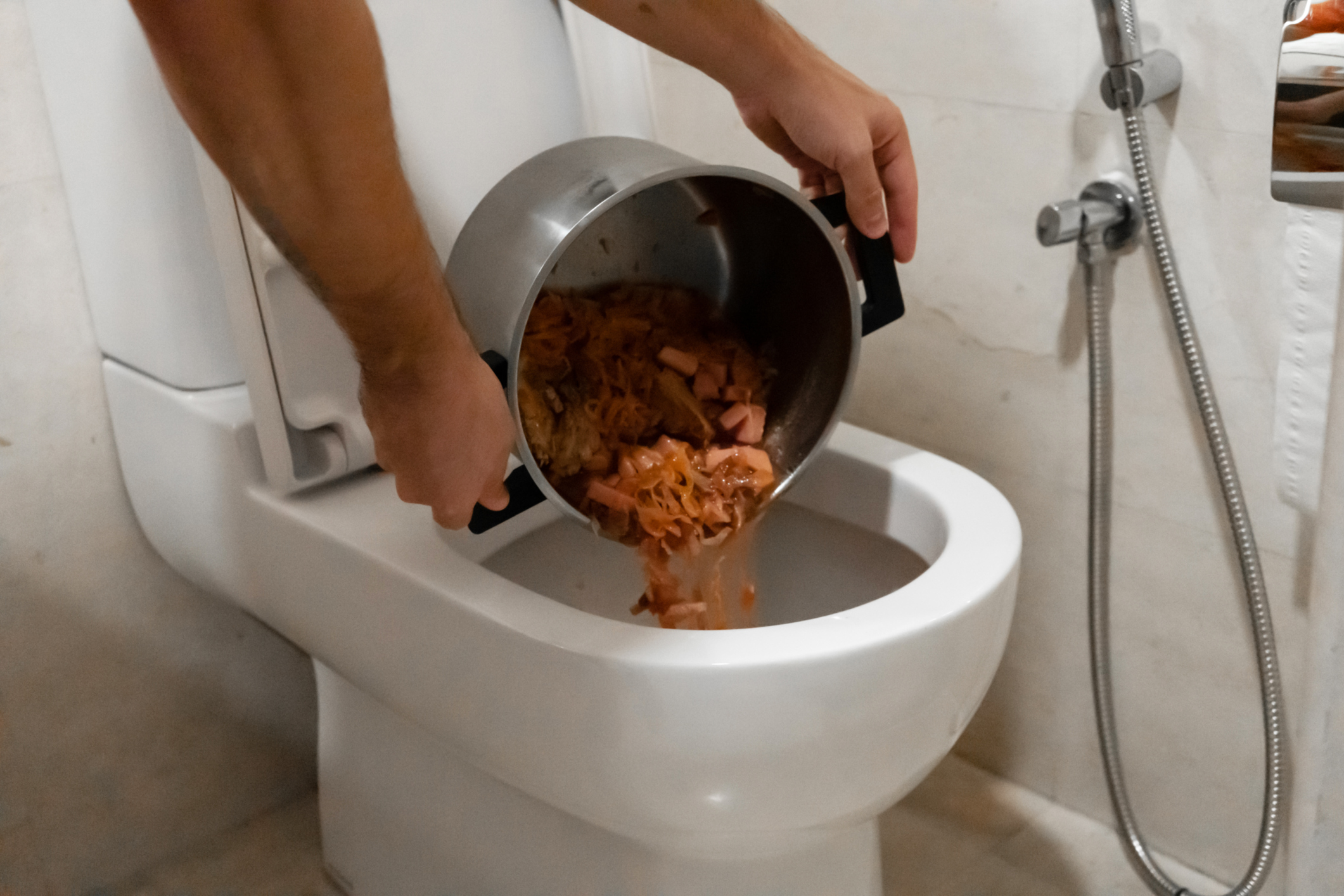Can You to Flush Food in the Toilet?
Can You to Flush Food in the Toilet?
Blog Article
The article listed below in relation to Is it safe to flush food (especially rice) down the toilet? is exceptionally captivating. Read it for your own benefit and figure out what you think of it.

Introduction
Many individuals are frequently faced with the problem of what to do with food waste, particularly when it pertains to leftovers or scraps. One usual inquiry that develops is whether it's all right to purge food down the toilet. In this article, we'll explore the reasons people may think about flushing food, the repercussions of doing so, and different techniques for correct disposal.
Reasons people could consider flushing food
Lack of understanding
Some people might not be aware of the prospective injury brought on by purging food down the toilet. They may mistakenly believe that it's a harmless practice.
Ease
Purging food down the commode might look like a quick and easy service to getting rid of unwanted scraps, specifically when there's no neighboring trash can available.
Idleness
In many cases, people might merely choose to flush food out of sheer laziness, without considering the effects of their actions.
Repercussions of flushing food down the toilet
Ecological influence
Food waste that winds up in rivers can add to contamination and injury aquatic ecosystems. Furthermore, the water made use of to purge food can stress water resources.
Plumbing issues
Purging food can cause clogged up pipelines and drains pipes, causing pricey pipes fixings and troubles.
Types of food that should not be flushed
Fibrous foods
Foods with coarse textures such as celery or corn husks can obtain entangled in pipes and trigger clogs.
Starchy foods
Starchy foods like pasta and rice can soak up water and swell, leading to blockages in pipelines.
Oils and fats
Greasy foods like bacon or food preparation oils must never be purged down the toilet as they can solidify and create blockages.
Proper disposal approaches for food waste
Using a waste disposal unit
For homes equipped with waste disposal unit, food scraps can be ground up and purged via the plumbing system. Nonetheless, not all foods appropriate for disposal in this manner.
Recycling
Certain food packaging products can be reused, lowering waste and reducing environmental impact.
Composting
Composting is an environment-friendly means to get rid of food waste. Organic materials can be composted and made use of to enhance soil for horticulture.
The importance of proper waste monitoring
Minimizing ecological damage
Appropriate waste management methods, such as composting and recycling, assistance reduce air pollution and preserve natural resources for future generations.
Shielding pipes systems
By staying clear of the technique of flushing food down the bathroom, homeowners can stop pricey plumbing fixings and keep the integrity of their plumbing systems.
Final thought
To conclude, while it may be appealing to flush food down the toilet for comfort, it is essential to understand the potential consequences of this activity. By taking on appropriate waste management practices and taking care of food waste properly, people can add to much healthier pipes systems and a cleaner atmosphere for all.
FLUSH FOOD DOWN THE TOILET?
FLUSHING FOOD CAN CAUSE BLOCKED DRAINS IN YOUR HOME
All of the plumbing fixtures in your home are connected to the same sewer pipe outside of your home. This outdoor sewer pipe is responsible for transporting all the wastewater from your home to the Council sewer mains. Even small pieces of food that go down the kitchen sink can cause problems for your sewer. It should therefore be obvious that flushing larger bits of food, such as meat, risks a clog in either the toilet itself or the sewer pipes. Flushing greasy food is even more problematic because oil coagulates when it cools, coating the interior lining of your pipes.
THE TOILET IS NOT A BIN
Food isn’t the only thing that people shouldn’t be flushing down the toilet. People use the toilet to dispose of all kinds of things such as tampons, makeup wipes, dental floss, kitty litter and even underwear. Water goes to great lengths to educate residents about the high costs and stress placed on wastewater treatment systems simply from people flushing the wrong stuff down the toilet. It costs taxpayers millions of dollars each year, and homeowners thousands in blocked drain repairs.
FLUSHING FOOD IS A WASTE OF WATER
Flushing food is a waste of our most precious resource - water. In June this year Level 1 water restrictions were introduced to protect water supply from drought conditions. Much of New South Wales continues to be affected by prolonged drought with recent figures revealing up to 97 per cent of the state remains in drought. Depending on whether you have a single or dual flush toilet, every single flush uses between five and 11 litres of water. In the current climate this is a huge amount of water to be wasting on flushing food that should be placed in the bin (or better yet, the compost).
https://www.jabplumbingsolutions.com.au/blog/can-you-flush-food-down-the-toilet

We are very fascinated with Is it safe to flush food (especially rice) down the toilet? and I'm hoping you appreciated the blog post. Sharing is nice. One never knows, you may be doing someone a favor. Thanks a bunch for being here. Revisit us soon.
Free Estimates Report this page